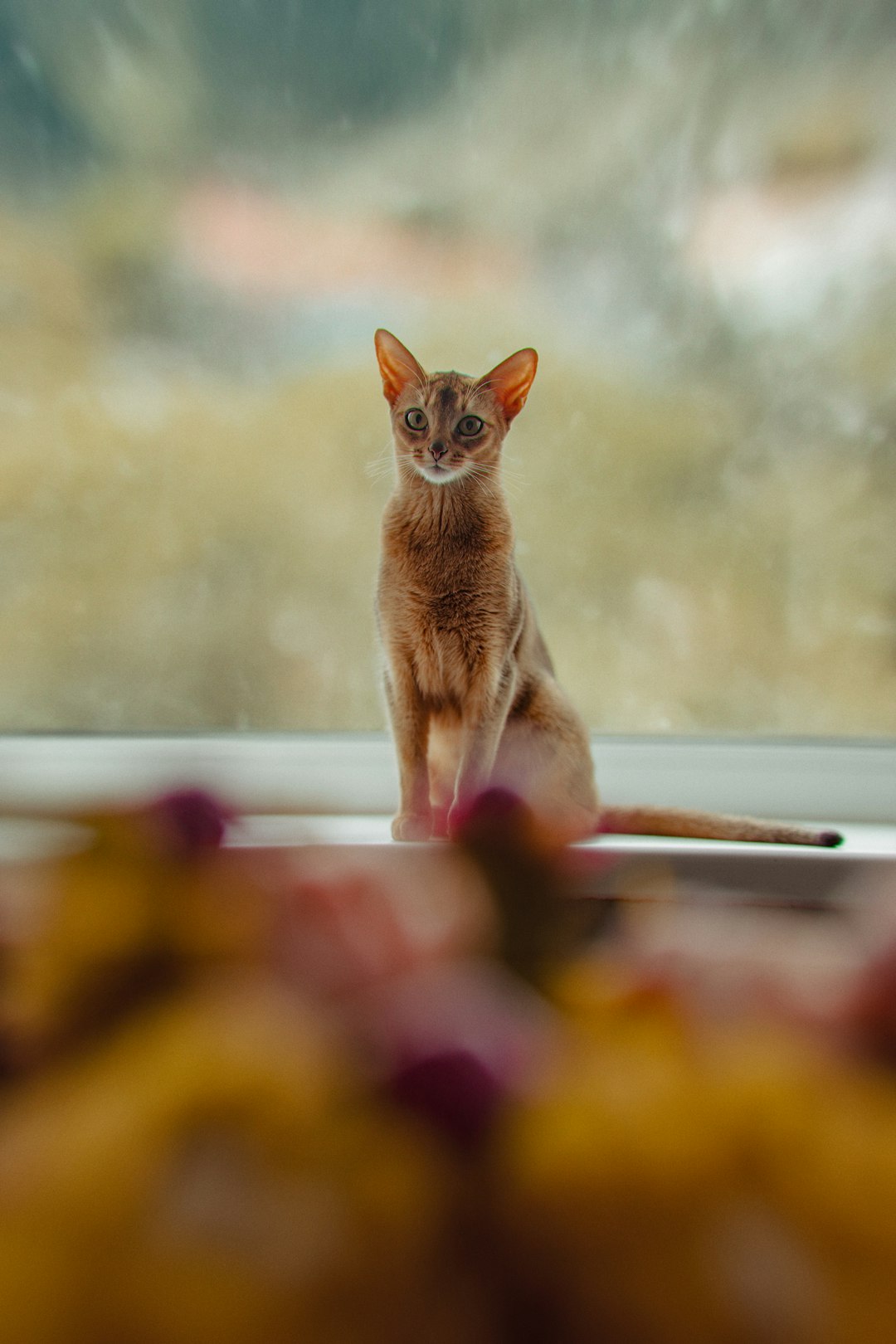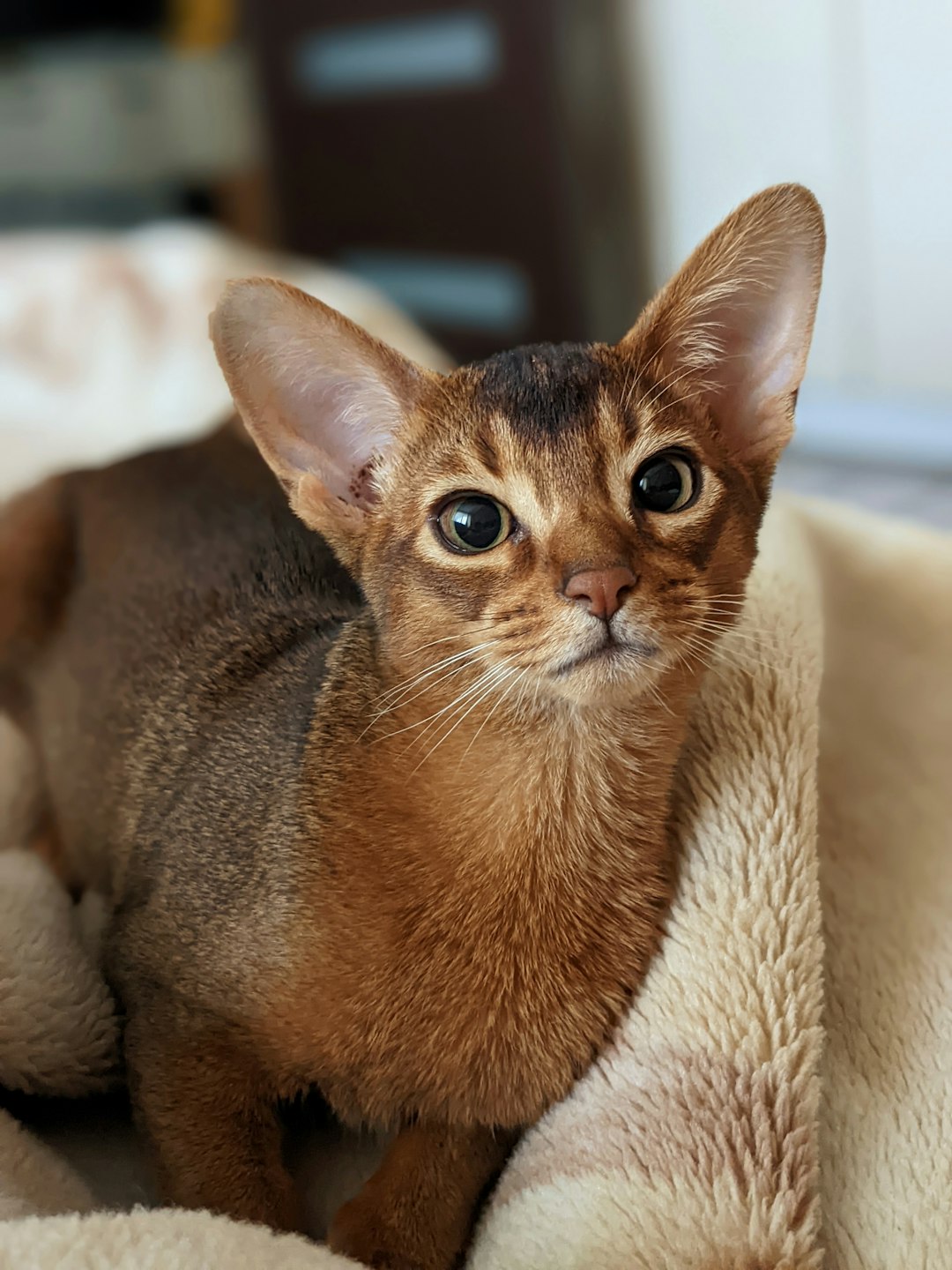Have you ever stumbled across a creature that looks like a cross between a domestic cat and a raccoon? Enter the ring tailed cat—a playful and curious little furball that leaves many scratching their heads. Known for their distinctively striped tails and vibrant personalities, these fascinating critters have a lot more to them than meets the eye. From their unique habitats to their quirky behaviors, we’ll dive deep into the mesmerizing world of the ring tailed cat and discover what makes them so enchanting. Prepare for an adventure that will educate and amuse!
Understanding the Ring-Tailed Cat: Overview of the Species
Meet the ring-tailed cat, a playful character from the feline family that’s not quite your typical house pet. Also known as the civet cat or carnivore extraordinaire, this fascinating creature belongs to the raccoon family, which makes it a true multitasker in the wild!
Key Features:
- Size: About 18 to 24 inches long, excluding their long, bushy tails.
- Weight: Ranges from 4 to 12 pounds—now that’s a load of cuteness!
- Coloration: Their fur features a quilt of gray, brown, and black patterns, topped off with those iconic ringed tails. Talk about a fashion statement!
Habitat:
Found primarily in North America, ring-tailed cats love dry, rocky areas, preferring mountainous terrains or arid deserts.
So, as you venture near their habitats, keep your eyes peeled! Remember, spotting a ring-tailed cat is like finding a quirky treasure in the animal kingdom. With their enchanting antics, they truly steal the limelight!
The Habitat of the Ring-Tailed Cat: Where They Live
The ring-tailed cat, also known as the Bassariscus astutus, prefers a delightful mix of environments that keep them on their toes. This agile little creature thrives in:
- Deserts: They love the warm and arid conditions, making their homes in crevices or underbrush.
- Scrublands: The thick foliage offers both cover and a smorgasbord of insects and small prey.
- Woodlands: They appreciate the trees for climbing and prowling—the perfect vantage point for spotting dinner.
Quick Comparison: Ideal Habitats
| Habitat Type | Characteristics | Why the Ring-Tailed Cat Loves It |
|---|---|---|
| Desert | Dry, open spaces with sparse vegetation | Plenty of hiding spots and lots of hunting grounds |
| Scrubland | Dense foliage and low shrubs | Provides great cover from predators while hunting |
| Woodland | Trees and underbrush | Ideal for climbing and escaping threats |
In short, the ring-tailed cat is quite the adaptable little critter! You can find them from the cool mountains of the western United States to the warm deserts of Mexico, proving that they know how to live life on their own terms. So, keep your eyes peeled next time you’re outdoor adventuring—you might just catch a glimpse of this playful feline in its natural habitat!
Physical Characteristics of Ring-Tailed Cats: Nature’s Design
When it comes to the ring-tailed cat, nature has truly outdone itself! These delightful creatures sport some distinctive features that make them the star of the show in the wild. Here’s a peek at what sets the ring-tailed cat apart:
- Tail: Unsurprisingly, the ring-tailed cat’s most eye-catching trait is its long, bushy tail adorned with bold black and white rings. This tail isn’t just for show—it helps them maintain balance when they leap and climb!
- Fur: Their soft, tawny fur gives them an adorable appearance, while also providing excellent camouflage against their natural habitat of rocky canyons and forests.
- Eyes: With those large, expressive eyes, a ring-tailed cat can see well, even in low-light conditions. Just think of them as the nocturnal ninjas of the animal kingdom!
Here’s a quick comparison table highlighting some of their physical traits:
| Feature | Description |
|---|---|
| Height | 12-16 inches at the shoulder |
| Weight | 4-12 pounds |
| Tail Length | Up to 16 inches |
So, the next time you see a ring-tailed cat, you’ll know you’re in the presence of nature’s very own design masterpiece!
Diet and Feeding Habits of the Ring-Tailed Cat
When it comes to dining, the ring-tailed cat definitely has a discerning palate. These nimble little creatures are primarily insectivorous, but they won’t turn down a good meal when the opportunity arises. Here’s a glimpse into their dietary habits:
- Preferred Diet:
- Insects (think crickets and beetles)
- Small mammals (mice love to scamper into their menus)
- Fruits and vegetables (yes, they can be quite the health-conscious eaters!)
- Hunting Style:
- Ambush predators! They rely on their agility, stealth, and keen eyesight to pounce on unsuspecting critters.
- Feeding Time:
- Not strictly diurnal or nocturnal; the ring-tailed cat is an opportunistic feeder. They may hunt based on their mood or environmental conditions.
In comparison to other small predators, such as weasels and foxes, ring-tailed cats show greater dietary flexibility, allowing them to thrive in various environments. So, next time you’re enjoying a snack, consider the delightful dining habits of our playful friend, the ring-tailed cat!
Social Structure and Behavior of Ring-Tailed Cats
When it comes to the lively world of the ring-tailed cat, these critters are more social butterflies than you might expect. Here’s a peek into their quirky social lives and behavior:
- Social Creatures: Ring-tailed cats display a communal spirit. They often live in small groups, which helps them navigate their environments with more ease and ensure better protection from predators.
- Vocal Communication: Think of them as the chatty types! They engage in a variety of vocalizations, utilizing chirps, growls, and purrs to communicate with friends and foes alike.
- Territory & Grooming: These feline wonders establish territories that they defend vigorously. When it comes to grooming, ring-tailed cats engage in social grooming – a bonding activity that fosters group harmony.
| Behavior Trait | Description |
|---|---|
| Social Structure | Communal living in small groups |
| Communication | Variety of vocalizations for interaction |
| Territoriality | Defends established areas vigorously |
In essence, the ring-tailed cat lives by the motto: “We’re better together!” Their playful antics and strong social bonds make them a delightful species to observe.
Reproduction and Life Cycle of the Ring-Tailed Cat
Ah, love is in the air for the ring-tailed cat! These charismatic critters host a fascinating reproductive process that’s both charming and intriguing. Let’s dig into their romantic escapades and milestones in their life cycle:
- Breeding Season: Typically, the ring-tailed cat plays the dating game from late winter to early spring. During this time, males strut their stuff, hoping to woo the ladies with displays of agility and charm!
- Gestation: After a successful courtship, the female retreats to her cozy nest (a hollow tree or den) for a gestation period of about 63 days. Yes, those adorable furballs cook for a while!
- Kittens: When it’s showtime, she gives birth to a litter of 2-6 kittens. These bundles of joy are born blind and depend entirely on mom for food and protection.
- Weaning: By around ten weeks, the kittens start to develop their playful personalities and can begin to eat solid food.
- Independence: Just a few months later, these young adventurers are ready to spread their wings (or paws) and venture into the world!
In essence, the life journey of a ring-tailed cat is a delightful tale of growth, independence, and a hefty dose of playful antics!
Ring-Tailed Cats in Culture and Folklore
The charm of the ring-tailed cat extends beyond its playful antics and elegant stripes; this delightful creature has become a vibrant part of various cultures and folklore. Here’s how the ring-tailed cat has captured hearts and imaginations:
- Native American Legends: In many tribes, the ring-tailed cat symbolizes agility and cleverness. Stories often depict it as a trickster, akin to the coyote, showcasing its cleverness in outsmarting predators.
- Popular Culture: From animated features to children’s books, the ring-tailed cat pops up as a whimsical character, embodying the spirit of curiosity and playfulness.
- Ecological Role: In folklore, the ring-tailed cat can serve as a reminder of nature’s balance, reflecting indigenous beliefs about wildlife’s interconnectedness and the importance of preservation.
Quick Folklore Facts:
| Culture | Symbolism |
|---|---|
| Native American | Agility and cleverness |
| Popular Media | Curiosity and playfulness |
Embracing the ring-tailed cat in stories not only entertains but also raises awareness about this unique species and the need for their conservation. So, the next time you spot one, think about its rich cultural tapestry!
How to Spot a Ring-Tailed Cat in the Wild
Spying a ring-tailed cat in the wild can feel like the universe just handed you a treasure map! These playful little critters possess a few telling traits that make them easier to locate. Here’s a handy checklist to enhance your spotting skills:
- Time of Day: Ring-tailed cats are nocturnal. Venture out at dusk or dawn for your best chances!
- Great Heights: With a love for climbing, look up! Spot them on tree branches or roof tops.
- Environmental Clues: Listen for their distinct calls, often a series of chirps or whistles—nature’s way of announcing their presence.
- Tracks and Scat: Pay attention to footprints—small, with four toes on the front and five on the back. The scat, often filled with insect parts, can also give you a clue.
- Watch the Brush: These elusive charmers often conceal themselves among dense underbrush or rocky crevices—so keep your eyes peeled!
Armed with this information, you’re well-equipped to embark on an exciting adventure in search of the charming ring-tailed cat. Happy spotting!
Connecting with Ring-Tailed Cats: Ways to Help and Educate
Want to be a hero for the adorably elusive ring-tailed cat? Here are some fun and impactful ways to connect, help, and spread the word:
- Educate Yourself and Others: Dive deep into the world of the ring-tailed cat. Host a trivia night or start a friendly competition on fun facts about this playful species.
- Volunteer: Many wildlife organizations focus on conserving the ring-tailed cat. By volunteering, you not only lend a helping hand but also gain firsthand experience with these fascinating creatures.
- Support Conservation Efforts: Donate or fundraise for habitats where ring-tailed cats roam. Every penny counts towards their protection and conservation.
- Spread Awareness: Create eye-catching social media posts to alert others about the struggles and triumphs of the ring-tailed cat. Let’s make them go viral!
- Visit Educational Centers: Many zoos and conservation centers provide insights into the life and habitat of ring-tailed cats. Take a trip, ask questions, and soak up the knowledge.
By engaging in these activities, you contribute to the preservation of the ring-tailed cat while satisfying your inner naturalist. Happy connecting!
Connecting with Ring-Tailed Cats: Ways to Help and Educate
So you’ve fallen in love with the ring-tailed cat? Who wouldn’t? These playful critters have charmed their way into our hearts. Now, let’s talk about how you can be a hero for this enchanting species:
- Educate Yourself and Others: Knowledge is power! Share fun facts about the ring-tailed cat and their natural habitat. Host informative movie nights featuring documentaries—everyone loves a good wildlife flick!
- Participate in Local Conservation Efforts: Join organizations dedicated to protecting the ring-tailed cat’s environment. You’ll meet fellow enthusiasts, plus it’s a great excuse to spend more time outdoors!
- Support Eco-Friendly Practices: Reduce pollution and waste. Less plastic = healthier habitats for our furry friends. Remember, a cleaner environment means happier ring-tailed cats!
- Volunteer for Wild Animal Centers: Get hands-on experience and help rehabilitate injured critters, including the adorable ring-tailed cat.
- Spread the Word on Social Media: Share your passion online. Use hashtags like #RingTailedCatLove and engage with fellow advocates!
By connecting with these unique creatures, we not only champion their cause but also enrich our own lives!
Frequently Asked Questions
What exactly is a ring-tailed cat, and what makes it so unique?
Ah, the ring-tailed cat, also whimsically known as the ringtail! This delightful creature isn’t your ordinary feline—it’s a masked bandit of the animal kingdom from the raccoon family, native to the rocky regions of the western United States. With its long, bushy tail adorned with distinctive black and white rings, it’s like nature’s very own fashionista. They’re renowned for their acrobatic abilities and playful antics, making them an endearing subject for animal lovers.
Where can I find ring-tailed cats in the wild?
If you’re itching for a little feline adventure, head to the rocky outcrops and forests of the western United States. You’ll find these adventurous little critters thriving in places like Arizona, California, and New Mexico. They love to play hide-and-seek in the crevices, making them both elusive and charming. Just approach quietly, as they prefer to keep their distance from humans (after all, they do have a reputation to maintain!).
Are ring-tailed cats good pets?
While the idea of having a ring-tailed cat frolicking around your living room sounds adorable, these mischievous critters don’t fit the mold of traditional pets. They are wild animals with a penchant for climbing, quirkiness, and a need for independence that makes them a handful at best. Plus, they require specialized care and environments to thrive—so unless you’ve got a mini rainforest in your backyard, it’s best to admire them from afar!
What do ring-tailed cats eat?
Feast your eyes on their culinary playbook! Ring-tailed cats are opportunistic eaters, dabbling in a buffet of delights including insects, small mammals, fruits, and even bird eggs—talk about a varied menu! Their foraging skills are exceptional, and the nocturnal diet fits right into their lifestyle of prowling under the moonlight. Just like a college student raiding the fridge at midnight, they’ll take advantage of whatever tasty morsels they can find!



